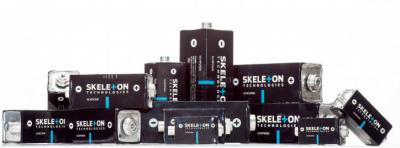A study led by John Heinzel from the US Naval Surface Warfare Center in Philadelphia, along with researchers at the University of Texas at Arlington, has compared the performance of supercapacitors from four different manufacturers: Maxwell, Ioxus, JM Energy, and Skeleton. Of the four tested, only the Skeleton supercapacitors are graphene-enhanced.

The team studied cells from the four different manufacturers under high pulsed load conditions to measure their power density into low-impedance loads. The researchers found that the Skeleton cell far outperformed the other cells tested, and graphene was mentioned as the probable cause for this efficiency.
Skeleton’s superior results are likely due to their use of curved graphene instead of the activated carbon that the other manufacturers use. This advancement in the energy storage technology will allow for the construction of energy systems that can supply more power to transient loads and allow for the reduction in the size of existing systems. It also allows for more efficient energy storage systems due to the cell’s low ESR. Future testing will include repetitive pulsing that will be used to compare the amount of energy lost as heat for each cell due to their ESR".

